How to choose washing powder from all those boxes and packages that are forced to store shelves? Maybe you are faithful to the product that your mom used, a product with a favorite smell, or simply buying the first thing that came handy ... If you want to approach the issue more consciously, study our rating of low and medium price washing powder, as well as a brief reference for the buyer at the choice of means for washing.
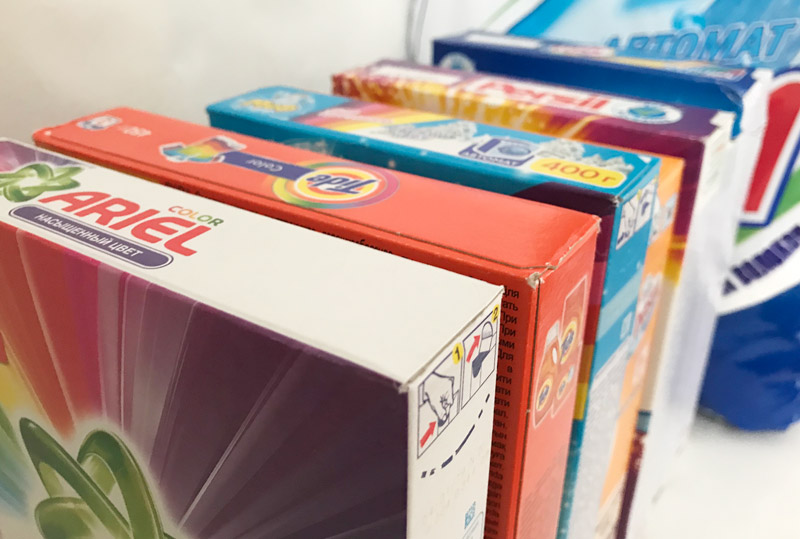
Attention! In our rating of washing powders, powders with phosphates are NOT the most harmful components of detergents for ecology and human health. For example, such means as “Eared nannies” (yes, the most popular children's laundry detergent consists of phosphates by 15-30%!) And SARMA. The last option according to consumer assessment is very effective, but it contains 5-15% of phosphates, which is not very much, but still not good. For more information about the dangers of phosphates, see the last chapter of this article.
Rating of washing powders in the mass market category
We selected 10 popular universal washing powders of low and medium price categories (from 90 to 200 rubles / kg) and rated them on a 5-point scale according to 3 criteria: washing ability, safety, general consumer rating.
Here's what we got:
- The best washing powder - Persil;
- The best inexpensive washing powder - Dosia;
- Worst Powder Rating - Pemos.
And here is the rating (if you look at the table on the smartphone, turn it to the horizontal position - the whole table will go into the screen area):
| Powder name | Washing ability | Security | Consumer rating | Overall Rating |
|---|---|---|---|---|
| Persil color | 4 | 3 | 4,5 | 11,5 |
| Amway Home Premium SA8 | 3 | 5 | 3,5 | 11,5 |
| Dosia Alpine Freshness | 3,5 | 3 | 4 | 10,5 |
| Stork | 3,5 | 3 | 4 | 10,5 |
| Losk color | 3,5 | 2 | 4 | 9,5 |
| Sorti color | 3 | 3 | 3,5 | 9,5 |
| Ariel color | 3 | 2 | 4,5 | 9,5 |
| Tide color | 3,5 | 1 | 4 | 8,5 |
| Myth Fresh Color | 2,5 | 2 | 4 | 8,5 |
| Pemos Active Oxygen | 3 | 1 | 4 | 8 |
Note: With an equal number of points, the highest place in the ranking is taken by the powder with a lower price.
How did we make the rating?
And now more about how we tested laundry detergents.
- Detergency Identical samples of white fabric made from 100% cotton were stained with 5 types of stains: red wine, ketchup, women's lipstick, grass and grease. In order for the spots to have time to get into the material, we left the samples for 24 hours and only then washed them in a washing machine at a temperature of 30 degrees in the “Cotton” mode for 2 hours. We evaluated the washed samples on a 5-point scale, where: 5 points - stains completely disappeared from the fabric; 4 points - stains have become barely noticeable; 3 points - spots are clearly visible on the fabric, but significantly pale and diminished in size; 2 points - the spots turned pale and decreased not significantly; 1 ball - the spots almost did not change in size and color. Immediately, we note that the ideal result could not be achieved with a single powder.
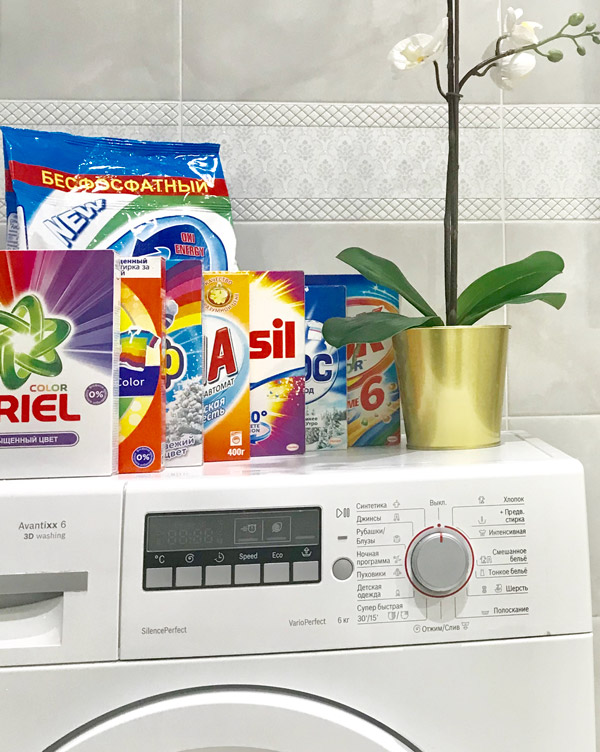
- Security. Since we cannot obtain laboratory data on the toxicity index of all washing powders, as well as data on the ability of a-surfactant powders of different grades to leach out of the tissues, we decided to determine the safety of the agents by their compositions. The assessment methodology is as follows: we assigned a conditional hazard index to each harmful substance that can be used in laundry detergents, then we calculated the sum of the indices for each powder and transferred the results to a 5-point system. Of course, this method of assessing the safety of funds is not the most accurate, but it is enough to determine the “least evil” and powders that you should keep away from.
Here is a list of undesirable components with indication of conditional indices of hazard
- Anionic Surfactants (A-surfactant, A-Tenzida) - 0,3
- Phosphonates and phosphorites (less "evil" substitutes for phosphates) - 0,2
- Optical bleach - 0,2
- Odorants - 0,2
- Zeolites - 0,1
Notes: In some powders, a-surfactants and phosphonates are contained in a minimal amount, that is, less than 5%, and this is already good. Therefore, in such cases, we decided to reduce the indicators of harm by 0.1. Another clarification: in the washing powder “Myth” there are only two components from our list, but there are others, namely benzyl acetate and linonen. We assigned a hazard index of 0.1 to each of them.
Now about transferring the results of calculating the indices of harm into a 5 point system:
- 5 points = sum of hazard index 0.5;
- 4 points = 0,6;
- 3 points = 0,7;
- 2 points = 0,8;
- 1 point = 0,9-1.
About exactly what these ingredients of laundry detergent are so bad, read more in the next chapter.
- Consumer rating. We analyzed the reviews of users of the Otzovik.ru and irecommend.ru sites and estimated the reputation of washing powders on a 5-point scale, where: 5 points - mostly positive feedback, 4 points - mostly good grades, 3 points - satisfactory ratings, 2 points - mostly bad reviews, 1 ball - mostly sharply negative user reviews.
Detailed analysis of washing powders rating
1st place: “Persil Color” (Henkel LLC) - the most effective powder
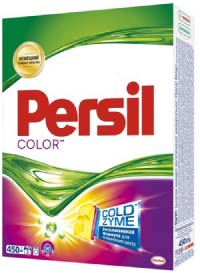
Price for 1 kg: 164 rub.
Security: A powder with a moderately harmful composition (a-surfactant, fragrance, phosphonate) is NOT suitable for washing children's clothes. However, there is good news: according to laboratory data from Roskontrol, after washing with this powder, the minimum amount of surfactant remains in the fabric.
Efficiency: Persil showed better efficacy, perfectly washing off contamination from ketchup and grass, well removing stains from grease and wine. However, the traces of red lipstick remained clearly visible and only slightly turned pale.
Minuses: high price, high consumption, strong smell.
2nd place: “Dosia Alpine Freshness” (Rekit Benkizer Production LLC) - inexpensive good quality powder
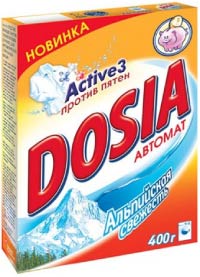
Price for 1 kg: 108 rub.
Security: Powder with a moderately harmful composition (a-surfactant <5%, fragrances, optical bleach, zeolite) is NOT suitable for washing children's clothes. However, just like the Persil washing powder, Dosia showed excellent washout of surfactants from washed laundry (according to Roscontrol's laboratory studies). In addition, a-surfactant in the composition of the powder is less than 5%, which is a very rare advantage.
Efficiency: In general, Dosia showed good efficiency, having perfectly cleaned traces of grass and ketchup, well removing greasy stains. However, the powder and lipstick powder coped only satisfactorily.
Pros: Low price, neutral smell.
Minuses: Great expense.
3rd place: “Amway Home Premium SA8” - the most expensive and safe, but not perfect

Price for 1 kg: 531 rub. Despite the high price, we included Amway powder in our rating, because according to the manufacturer, 1 kg of SA8 concentrate replaces 3 kg of regular powder.
Security: Laundry detergent SA8 has the best composition compared to other rating participants. It is the only one that does not contain a-surfactant and has an insignificant content of phosphonates (less than 5%). However, there are still harmful ingredients in SA8 - they are optical bleaches and fragrance. For this reason, it is NOT advisable to use powder for washing children's clothes.
Efficiency: Amway SA8 powder showed good results, completely wiping off stains from ketchup and grass, coped well with fat and wine stains, but badly with lipstick marks.
Pros: Low consumption, dispenser included and neutral smell.
Minuses: Even with 3 times less consumption, the price of the powder remains quite high.
4th place: “Aist” (CJSC “Aist”) - unexpected solid “good” from a domestic producer
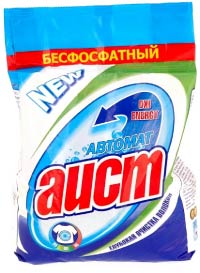
Price for 1 kg: 115 rub.
Security: The stork has a good composition - from harmful ingredients only a-surfactant, optical bleach and fragrances. According to tests Roskoschestva powder perfectly washed out of the fabric.
Efficiency: Powder Stork showed good results, almost completely washes stains from ketchup, fat, grass. But poorly coped with lipstick and red wine.
Pros: Low price, neutral smell, soap and sodium carbonate in the composition.
Minuses: Powder is not sold in all stores.
5th place: “Sorti Color” (Nefis Cosmetics JSC) - an inexpensive workhorse
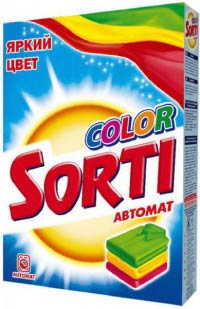
Price for 1 kg: 100 rub.
Security: The safety level of this powder can be called tolerable, since it contains a-surfactant, phosphonates and fragrances. According to Roskontrol, after washing laundry, a-surfactant is not completely washed out, therefore an additional rinse is recommended. Powder Sorti can not be used for washing children's clothes.
Efficiency: Sorti showed average washing ability, completely washing off stains from ketchup, grass, satisfactorily coped with a greasy stain, but poorly with traces of lipstick and red wine.
Pros: Low price.
Minuses: Dosya and Sorti powders are about the same cost and about equally toxic, but Dosya powder has shown greater efficiency.
6th place: “LOSK Color” (Henkel LLC) - the cheapest powder with good washing ability, but not very good composition
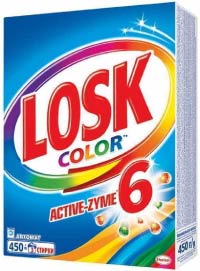
Price for 1 kg: 90 rub.
Security: This powder has 4 harmful ingredients (out of 5 possible): a-surfactant, phosphonates, fragrances and zeolites. Powder Gloss can not be used for washing children's clothes.
Efficiency: Powder Gloss showed good results, almost completely washes stains from ketchup and grass. Stains from wine, grease and red lipstick have become much paler.
Pros: The lowest price compared to other rating participants.
Minuses: The powder has a sharp smell. After our test wash, things left traces of indelible powder.
7th place: “Tide Color” (Procter & Gamble LLC) - effective powder with poor composition
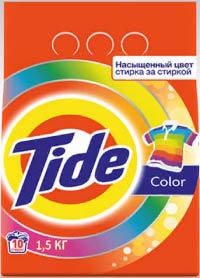
Price for 1 kg: 170 rub.
Security: This powder has 5 harmful ingredients out of 5 possible: a-surfactant, phosphonates, optical brighteners, fragrances and zeolites. According to Roskontrol, after washing laundry, a-surfactant is not completely washed out, therefore an additional rinse is recommended. Powder "Tide" can not be used for washing children's clothes, it is undesirable to use allergies and people with sensitive skin.
Efficiency: "Tide" well removed stains from ketchup, grass and wine, satisfactorily coped with dirt from lipstick and grease.
Minuses: The powder has a sharp smell and is expensive.
8th place: “Pemos Active Oxygen” (LLC “Henkel”) - inexpensive powder with poor composition
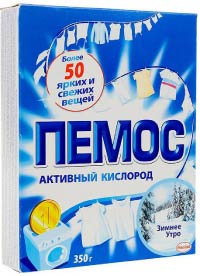
Price for 1 kg: 107 rub.
Security: "Pemos" contains 5 harmful ingredients out of 5 possible. According to Roskontrol, this powder was the worst tested for toxicity (compared to Tide, Persil, Ariel, Myth and Sorti), but showed good a-surfactant washout. Powder "Pemos" can not be used for washing children's clothes, it is undesirable to use allergies and people with sensitive skin.
Efficiency: The average efficiency of washing - the tool coped well with ketchup and traces of grass, while the stains from wine, fat and lipstick remained, but turned very pale.
Pros: Low price, neutral smell.
Minuses: Large expenditure of funds.
9th place: Ariel Color (Procter & Gamble LLC) - an expensive powder of satisfactory quality.
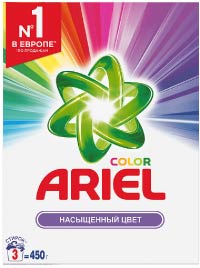
Price for 1 kg: 160 rub.
Security: Ariel has 4 harmful ingredients out of 5 possible: a-surfactant, phosphonates, fragrances and zeolites. According to Roskontrol after washing linen a-surfactant is washed out badly, so it is recommended to conduct additional rinsing. Ariel powder can not be used for washing children's clothes, it is undesirable to use allergies and people with sensitive skin.
Efficiency: The tool showed average results of washing, perfectly removing stains from ketchup and herbs, but coping with fat, wine and red lipstick only satisfactorily.
Minuses: Pungent smell and high cost.
10th place: “Myth Freshness of Color” (Procter & Gamble LLC) - the most ineffective washing powder
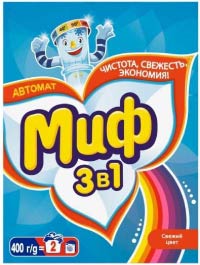
Price for 1 kg: 90 rub.
Security: “Myth” contains only two ingredients from the list of the main hazards of powders declared by us: a-surfactant and fragrance. However, it also contains three additional aromatic additives that can cause allergies - limonene, linalool and benzyl salicylate. We assigned a hazard index of 0.1 to each of these substances. As a result, the powder scored 2 points by the criterion of safety. In addition, according to Roskontrol a-surfactants, the products are poorly washed out after washing, so the laundry requires an extra rinse. Powder "Myth" can not be used for washing children's clothes, it is undesirable to use allergies and people with sensitive skin.
Efficiency: The test results can be described as satisfactory: the stains from ketchup and grass were completely wiped off, the stains from fat and wine turned pale, but remained clearly visible, the lipstick turned slightly insignificant.
Pros: Low price.
Minuses: The powder forms a lot of foam, which is not good for a washing machine, does not cope well with stains of fat, wine and red lipstick.
How to choose washing powder - a certificate for the buyer
The main principle of how to choose washing powder is quite simple:
The tool should correspond to the type of fabric, method of washing and the nature of contamination.
- For washing clothes in a washing machine, use only powders labeled "Automatic" or a washing machine icon. Hand washing products cannot be used, as they form a lot of foam, which can damage the equipment.
- White and light linen should be washed with white laundry powder with oxygen bleach and enzymes in the composition. If you wash white clothes with powder for colored laundry, nothing bad will happen, but if you do the opposite, colored laundry can fade.
- For washing delicate fabrics - silk and wool - you need to use special powders.
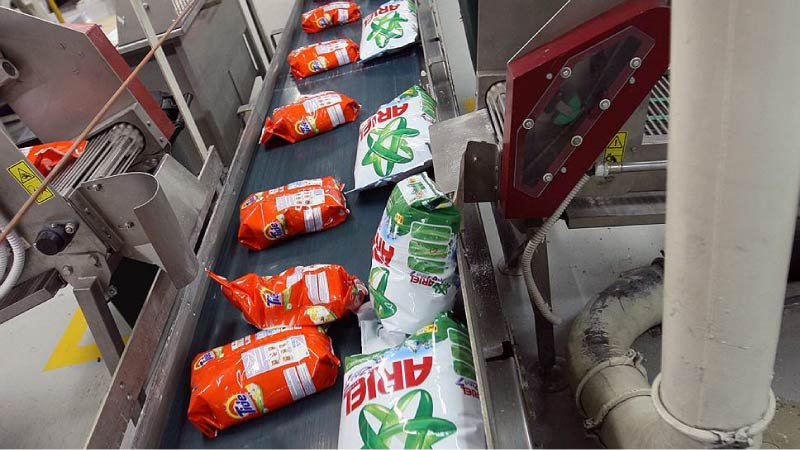
Other tips:
- All washing powders from our rating are not suitable for washing children's clothes, despite the statements of manufacturers.
- Allergy sufferers should use fragrance-free powders (either with a minimum number of fragrances) and optical brighteners, as well as with a minimum amount of a-surfactant (<5%) or without it.
- Instead of washing powders it is more profitable to use gels in capsules. With other things being equal, gels are less consumed, already have air conditioning in the composition, dissolve and rinse better, and are simply easier to use.
- For removing complex contaminants, such as fat or blood, it is good to use washing powders with enzymes - bio-additives that effectively fight organic pollution and are safe for health. The more different types of enzymes in the washing powder, the more expensive and efficient it is. However, it is undesirable to use them for everyday washing, as enzymes gradually damage the fabric fibers. By the way, all washing powders of our rating have enzymes in their composition.
- Washing powders with zeolites can leave white spots on colored laundry and make the laundry tighter.
- Choosing washing powder, it is very useful to be able to “read” the compositions. Here is a short list of unwanted components, remembering that once, you will be able to independently find in the store good quality products.
1. Surfactants
Surfactant is the main component of washing powders. Surfactants are anionic and non-ionic. Most often, both types of surfactants are used in powders. Nonionic surfactants are harmless and even beneficial to the fabric, but anionic surfactants (hereinafter a-surfactants), although more effective in washing, are harmful to human health. The fact is that anionic surfactants tend to accumulate in the body, having a detrimental effect on the immune system, internal organs and even the brain. Also a-surfactants can cause allergies and contribute to the development of dermatitis.
- The more a-surfactant in the composition of the product, the more foam it forms.
- Ideally, in the washing powder in general there should be no a-surfactant or their content should be minimal - less than 5%.
2. Phosphates, phosphonates and phosphates
15-20 years ago, all washing powders contained phosphate – phosphorus compounds, which are designed to soften hard water and enhance the effect of surfactants. There is only one problem - phosphates are harmful both to the ecosystem of water bodies and to human health. Today, most products do not contain phosphates, but they contain a little less evil - phosphonates and phosphates. As a rule, they are used in smaller quantities (less than 5%) and by themselves they are less harmful. But still harmful: adversely affect the blood penetrating into it through the skin (changing the content of hemoglobin, protein, blood serum density) and also irritate the skin, disrupting its acid-base balance. Phosphates and their analogues are washed out of the fabric only after 10 rinses.
3. Optical bleach
The purpose of optical brighteners (not to be confused with oxygen-containing bleach) is to “bleach” the fabric due to the light-reflecting properties, that is, in fact, to paint it. Therefore, after washing and rinsing optical bleaches remain forever on linen, having a harmful effect on the skin. Often powders with optical brighteners cause itching, irritation, redness, flaking or skin rash.
4. Zeolites
Zeolites in their effects and purpose similar to phosphates: they soften the water and increase the effect of a-surfactant 3 times.By themselves, zeolites are harmful because they degrease the skin, contributing to the destruction of fats.
5. Aromas
Most fragrances cause allergic reactions with itchy skin, eye irritation, and even severe allergies. There may be more serious consequences - asthma and impaired coordination of movements.
- How to remove scale from the kettle - 6 home remedies
- How to clean the pan outside and inside - 12 best ways
- How to clean the pan outside and inside - 8 simple ways for difficult cases
- 5 ways to clean the oven from fat and scale
- How to wash kitchen towels to perfect condition - 7 ways
- 8 ways to clean pipes from blockages

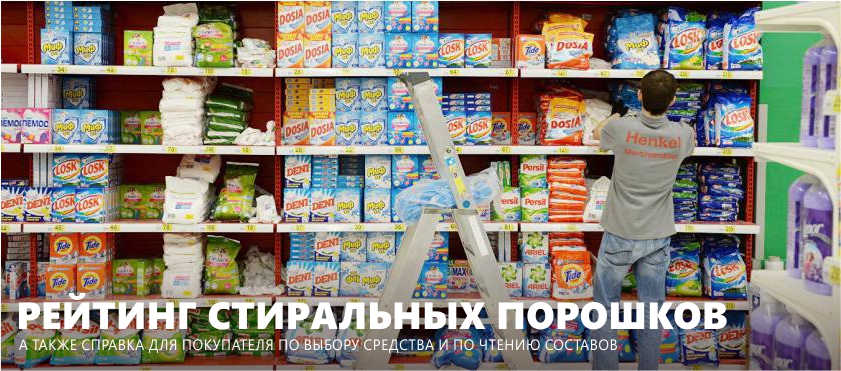

 (Rate the material! Already voted:3 average rating: 4,33 from 5)
(Rate the material! Already voted:3 average rating: 4,33 from 5)